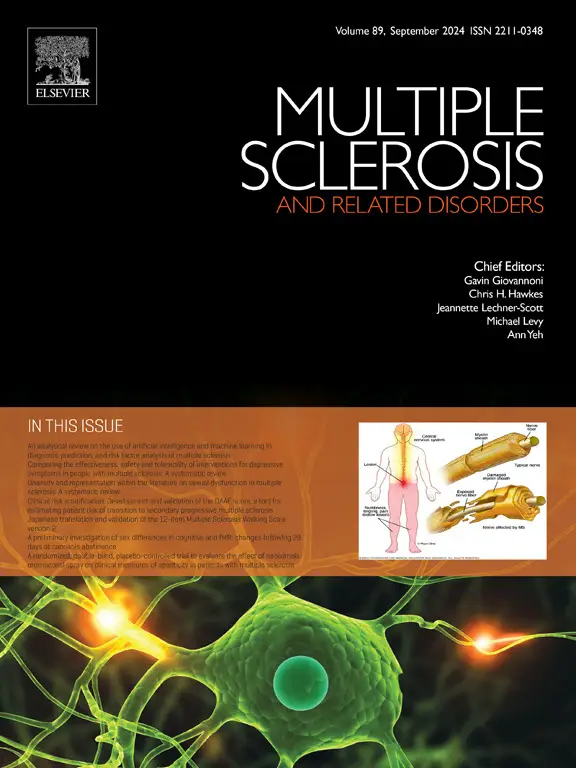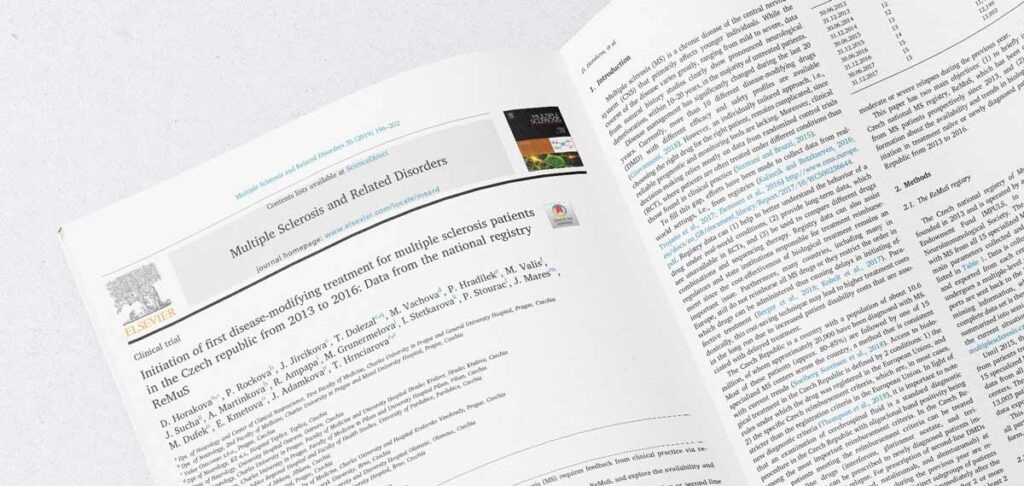Proper management of multiple sclerosis (MS) treatment requires feedback from clinical practice, which is provided by registries. This article focuses on introducing the Czech national multiple sclerosis registry, ReMuS, and examines the availability and use of disease-modifying drugs (DMD) in the Czech Republic. The study analyzes patients who initiated their first DMD treatment between 2013 and 2016 and compares the characteristics of patients who started treatment in different years. The study's findings provide important insights into the progress in MS treatment in the Czech Republic and the trends in treatment initiation during this period.

Horakova, D., Rockova, P., Jircikova, J., Dolezal, T., Vachova, M., Hradilek, P., Valis, M., Sucha, J., Martinkova, A., Ampapa, R., Grunermelova, M., Stetkarova, I., Stourac, P., Mares, J., Dufek, M., Kmetova, E., Adamkova, J., & Hrnciarova, T. (2019). Initiation of first disease-modifying treatment for multiple sclerosis patients in the Czech republic from 2013 to 2016: data from the national registry ReMuS. In Multiple Sclerosis and Related Disorders (Vol. 35, pp. 196-202). Elsevier BV. https://doi.org/10.1016/j.msard.2019.08.003 PMID: 31400559
Abstract
Background: Proper management of multiple sclerosis (MS) requires feedback from clinical practice via registries.
Objective: To introduce the Czech national multiple sclerosis registry, ReMuS, and explore the availability and use of disease-modifying drugs (DMD).
Methods: The analysis focused on patients who started their first DMD, either with first-line or second-line medication and was based on reimbursement criteria set by Czech regulators. Baseline information was used to predict relapses after DMD initiation and to compare patients that started DMD in different years.
Results: A total of 3,328 patients started DMD treatment for MS between 2013 and 2016; 3,203 on first-line and 125 on second-line medication. The proportion of patients starting on second-line drugs increased from 1.8% in 2013 to 4.7% in 2016. The occurrence of a relapse within one year of DMD initiation was significantly related to (1) the Expanded Disability Status Scale (EDSS) score immediately prior to starting DMD and (2) the number of previous relapses. Both parameters were significantly lower in patients starting in later years of the explored interval.
Conclusion: Data from the ReMuS registry highlights improvements made in the management of MS in the Czech Republic. However, a relatively low percentage of patients started treatment using second-line drugs, in contrast to trends in other countries.
Entire paper is available after login to the website of the Multiple Sclerosis and Related Disorders.

